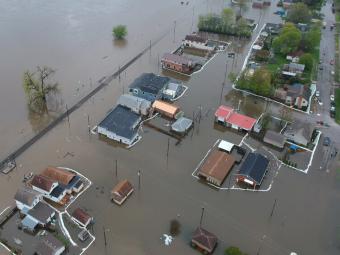Board of Review - Extended Session - Federal Disaster Area
DATE: Monday, May 13, 2019
TO: All Scott County, Iowa Property Owners
RE: Board of Review – Extended Session – Federal Disaster Area
Due to the recent record-setting flooding, on Saturday, May 10, 2019, the federal government declared Scott County, Iowa a federal disaster area. Per Iowa Code 441.37, this federal declaration automatically extended the 2019 Board of Review Session and assessment protest filing timeframe. Scott County property owners that feel their January 1, 2019 assessment was incorrect, but had missed the assessment protest filing timeframe from April 2nd to April 30th due to effects of this disaster, can now, to and including June 5th, protest their property’s assessment.
Unfortunately, please know that the law does not authorize the Board of Review to make adjustments to property assessments affected by flooding which happened throughout April and May. The Board is only concerned with the assessment and current condition and quality of the property as it was on January 1, 2019, which is well before the flooding occurred or had any effects on any properties in Scott County.
To protest an assessment, property owners can file by mail, email, or in person at the County Assessor’s Office. Property owners can also file online by looking up the property on the County Assessor’s website and scrolling to the bottom of the page and clicking “Scott County Assessment Appeals Process”.
If concerned with flooding effects on your property and the effects it has on the assessed value, property owners should contact the Scott County Assessor’s Office immediately by phone or email. The Assessor will answer any and all questions and also flag your property for inspection in late 2019 and check on its condition for upcoming assessment date January 1, 2020.
Respectfully,
Tom McManus
County Assessor
600 W. 4th Street - 5th Floor
Davenport, IA 52801
563-326-8635
[email protected]
Board of Review (BOR) Federal Disaster County Declarations
IMPORTANT DATES:
- January 1: Assessment Date - value based on current condition and quality of property (even if declared disaster area)
- March 1 - May 20: Declaration Period - BOR to extend session up to June 15
- April 2 - June 5: Protest Filing Period - if declared federal disaster area any time from March 1 to May 20
NOTES:
- In Iowa, federally declared natural disasters typically include flooding and tornadoes.
- Even if declared a federal disaster area within the proper timeframe, the BOR is to consider the assessment/value of the property based on the condition/quality as of January 1 of the assessment year.
- Unfortunately, disaster effects post January 1 have no effect on the current assessment/value.
- The BOR extension is to allow property owners who disagree with the January 1 assessment extra time to file.
- assumes property owners were preoccupied fighting the disaster during the normal protest filing dates April 2 to April 30.
- This BOR extension is open to ALL property owners in area, not just those affected by the disaster.
- assumes any property owner, whether their own property was directly affected by the disaster or not, may not have had time to file during normal protest filing dates due to assisting others in the community with fighting the disaster.
- Not only may property owners NOT see a decrease in assessed values, they may actually see an INCREASE in the next assessment.
- This is due to the current condition/quality on January 1 (pre disaster), then the added value of the repairs and updates and remodeling (post disaster). The property may be in better condition/quality after it is fully repaired from the damage.
- Between January 2 and December 31, it is not the assessor’s duty to lower the assessed value of a property due to affects from a natural disaster. That is what insurance is for - to cover unforeseen loss and loss of value, etc. Same with FEMA.
- By law, the assessor is to assess what is there on the property and the current condition/quality of it as of each January 1.
- The assessor should flag protested properties as needed for follow up inspections later in the year to determine the current value based on the condition and quality as of January 1 of the upcoming year.


